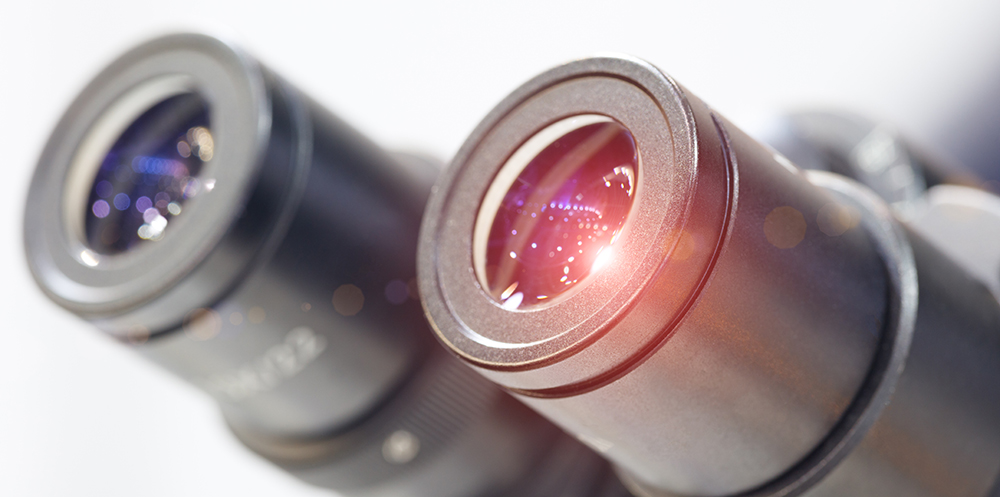
Scheduling Equipment Use
All equipment use is scheduled through BookitLab. BookitLab has an app available for your Apple or Android devices. Please follow these security guidelines when setting up your account:
- Username is first initial and full last name, all lowercase with no spaces.
- Use your U of I email account. No personal email addresses will be accepted.
- Use a unique password. Do not use your U of I password.
If you need assistance with equipment scheduling, BookitLab account setup, or to schedule a training session, please contact Raquel Simao Gurge.
Internal Training or Full-Service Rate*: $75/hr**
External Training or Full-Service Rate*: $383.33/hr**
*Includes planning, study design, and equipment operation during experiments
**This fee would be in addition to the hourly cost of instrument use. Training rates are still applicable to instruments with no fee.
Spectral Cell Sorter
The Invitrogen Bigfoot Spectral Cell Sorter is designed to expand your reach while fitting your workflow.
Research applications of flow cytometry include:
– Multi-color Immunophenotyping
– High-Speed Cell Sorting
– Plate-based Screening
– Functional Cellular Assays
Our Bigfoot™ Spectral Cell Sorter, 5 lasers, 53 parameters configured with:
– Excitation Lasers: UV 349 nm; 405 nm; 488 nm; 561 nm; 640 nm and 53 fluorescence detectors
- which allows the construction of different panels from the simplest to the most complex.
-Highly accurate, consistent, rapid sorting
- 70, 100, 120, and 150 µm nozzle tips
- 4-way sorting (96-well plate), multi-way sorting (384-well plate), or straight-down sorting into 1536-well plates
- 18-way allows researchers to separate multiple populations from a single sample or different samples into sets of 6 populations.
– Integrated biocontainment enclosure which provides personnel and product protection similar to the Class II biosafety cabinet
– Two methods to separate the sample signals, choose between conventional compensation or spectral analysis.
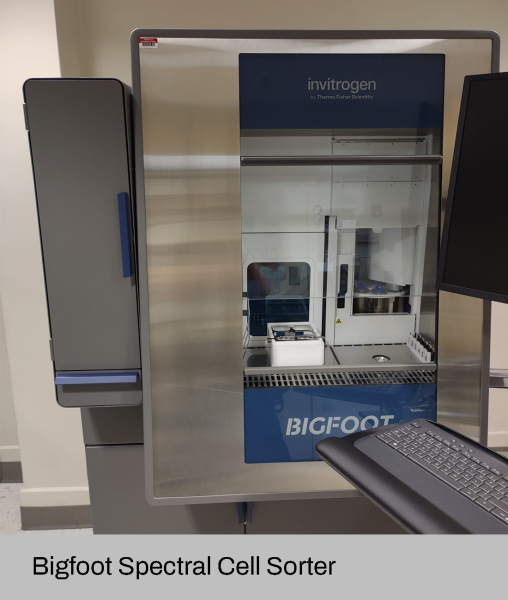
Internal Rates:
Analysis Hourly – $155/hr
Cell Sorting Hourly – $205/hr
3 Month Pass – $1,350
External Rates:
Analysis Hourly – $761.66/hr
Cell Sorting Hourly – $1,021.67/hr
3 Month Pass – $6,751.65
Confocal and Multiphoton Microscopy
The Olympus Fluoview upright microscope platform provides laser scanning confocal imaging of cells and tissues. The high energy of laser excitation, broad excitation options with multiple laser lines, variable scanning speeds and the pinhole aperture that reduces out of focus fluorescence, aid in producing extremely high resolution images.
The Olympus Fluoview also has a Coherent Ultra 2 multiphoton tunable laser ranging from 690-1040nm. The longer wavelengths of the multiphoton laser allow for deeper penetration, reduced damage to live tissue, reduced light scattering and second harmonic imaging.
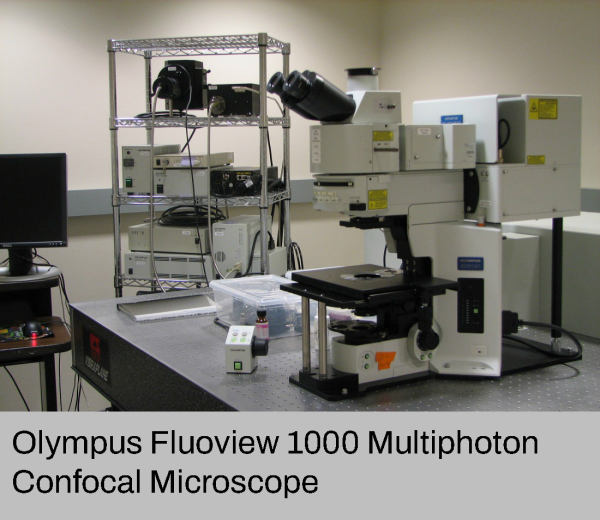
Internal Rates:
Hourly – $60/hr
3 Month Pass/150hrs max – $1,100
External Rates:
Hourly – $324.76/hr
3 Month Pass/150hrs max – $5,508.02
Nikon CrestOptics X-Light confocal
The CrestOptics X-Light confocal series, a comprehensive solution for challenging research applications. With seamless integration into Nikon’s exceptional microscope platforms and optics, this series is designed to meet all your imaging needs. From upgrading a budget-friendly widefield microscope to establishing a cutting-edge confocal system, the X-Light series now includes super-resolution capabilities for even the most demanding applications.
Crest Optics excels in delivering high-quality optical design and flexible components, allowing for tailor-made solutions that address the most intricate imaging challenges. The X-Light V3, a standout model within the series, brings together cutting-edge technology, advanced optical design, and innovative engineering solutions developed by CrestOptics.
The X-Light V3 is the ultimate choice for high-end microscopy applications, offering exceptional capabilities for various research scenarios. Whether you are observing fast cell dynamics in live specimens or performing optical sectioning of clarified tissues, the X-Light V3 is optimized to extract valuable data from each individual sample.
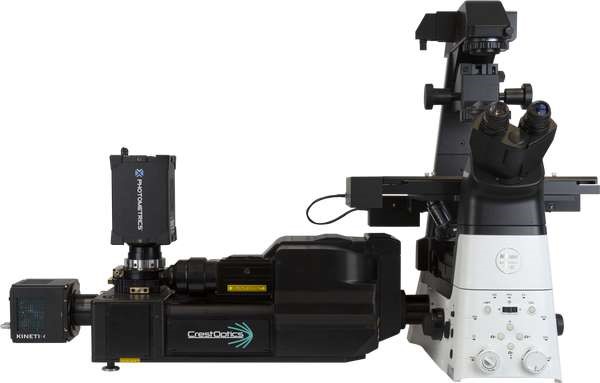
Internal Rates:
Hourly – $75/hr
3 Month Pass/150hrs max – $1,100
External Rates:
Hourly – $376.88/hr
3 Month Pass/150hrs max – $5,508.02
Spinning Disk Confocal Microscope
The Nikon spinning disk system includes a stage-top environmental control chamber on an inverted microscope for long time-lapse imaging. Dynamic imaging can be automated in 3 dimensions (X, Y, Z) over time (5) at multiple locations on the slide or culture dish using multiple fluorescent labels and DIC. Two cameras and 6 laser excitation options provide choices in resolution, speed of acquisition and fluorescent probes. A third monochrome camera is attached to the widefield pathway for epifluorescent and DIC imaging.
The Nikon TiE inverted microscope with a Yokogawa X1 Spinning Disk and perfect focus system is ideal for high speed live imaging. The Andor DU888U3 EMCCD and Zyla sCMOS cameras provide options for high sensitivity and speed to capture events on a true biological time scale. A Galvo miniscanner photoactivation system is available using UV activation in FRAP and optogenetic studies.
During the microscope upgrade, we changed the camera to an Andor Zyla sCMOS camera (up to 110 frames/second, 5.5 mpixel sensor, 6.5um pixel size, 16,000:1 dynamic range at 30 pfs is now a Prime BSI Express Scientific CMOS (sCMOS):
- up to 95 frames per second
- 6.5um x 6.5um pixel area
- noise reduction technology and correlated noise reduction technology to ensure clean delivery
- combines 95% quantum efficiency with low 1.0 e-read noise CMS mode to deliver the most sensitive camera based on sCMOS technology at over 40 frames per second
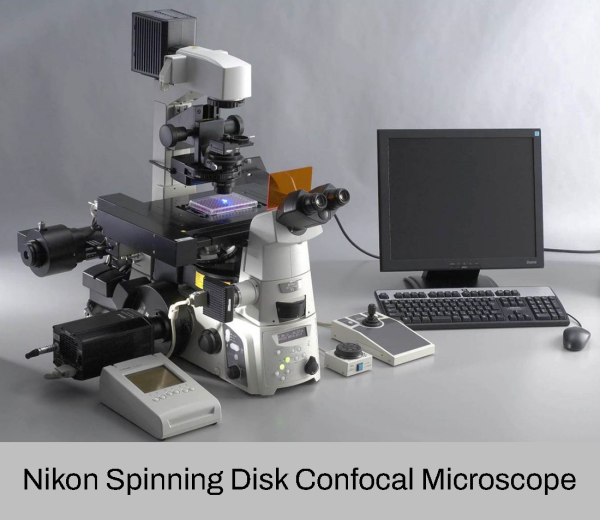
Internal Rates:
Hourly – $75/hr
3 Month Pass/150 hours max – $1,100
External Rates:
Hourly – $376.88/hr
3 Month Pass/150 hours max – $5,508.02
Epifluorescent and Transmitted Light Microscopy
The Nikon Spinning disk inverted microscope system has a separate pathway with a monochrome camera for epifluorescent and DIC imaging. A Leica upright Laborlux microscope with a color digital camera is available for true color imaging of traditional histological samples.
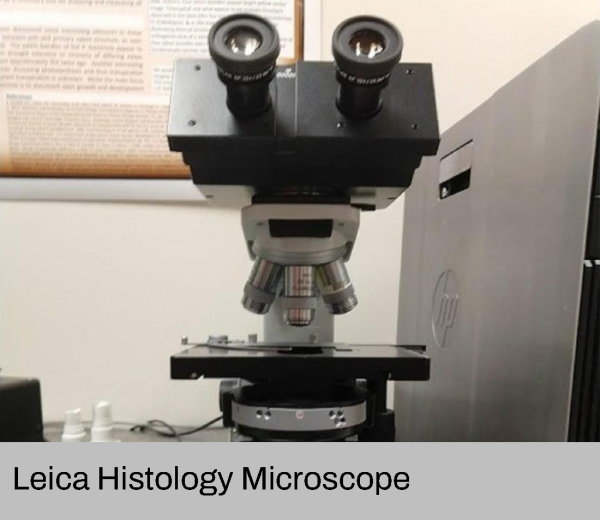
No Charge
Data Analysis Software
Multidimensional image analysis is available using Nikon’s NIS Elements AR, Imaris F1 and Fiji (Image J) analysis software. The NIS Elements AR package also includes deconvolution, image stitching, ratio/fret and JOBS environment for simplification of routine analysis. Imaris F1 includes a filament tracer module for automated analysis of tree-like volumetric results.
Flow cytometry data can be analyzed using FlowJo and Kaluza analysis of fcs files.
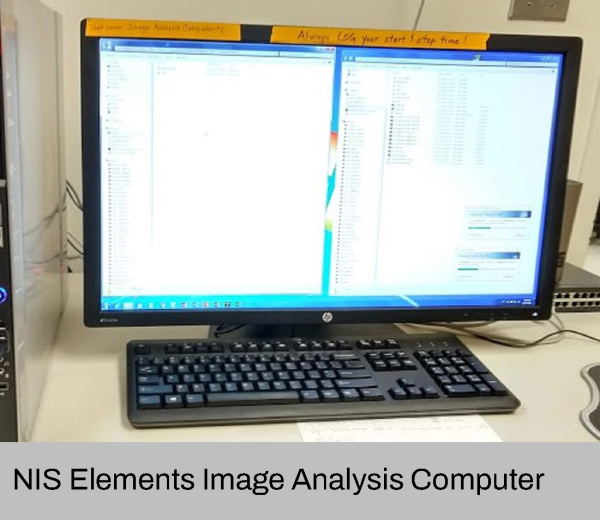
Internal Rates:
Hourly – $40/hr
3 Month Pass – $350
External Rates:
Hourly – $197.45/hr
3 Month Pass – $1,765.95
Flow Cytometry
The Beckman Coulter CytoFLEX S flow cytometer has 4 lasers and characterizes samples for side scatter, forward scatter and multiple fluorescent markers. The CytoFLEX accepts samples from multiple tube sizes and 96-well plates.
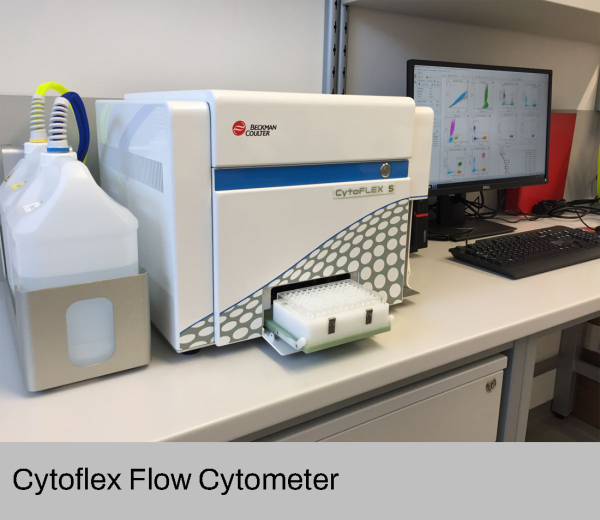
Internal Rates:
Hourly – $125/hr
3 Month Pass – $700
External Rates:
Hourly – $627.78/hr
3 Month Pass – $3,529.49
Fluorescent Stereo Microscopy
The Leica MZ16F Stereo Fluorescence microscope with DAPI, GFP and DsRed filter sets provides color imaging of surface structure of larger samples, such as nematodes, seeds and flowering plants.
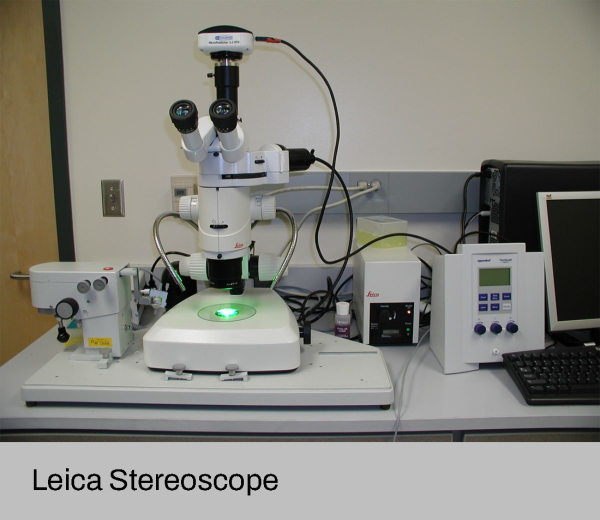
No Charge
PhenoBooth+ Colony Counter
PhenoBooth+ Colony Counter is an excellent instrument to count colonies quickly and easily. The closed 23-megapixel camera image and analyzes colonies on agar Petri dishes and rectangular plates. In addition, the PhenoBooth+ has five lighting channels that allow high resolution colony imagery to be captured.
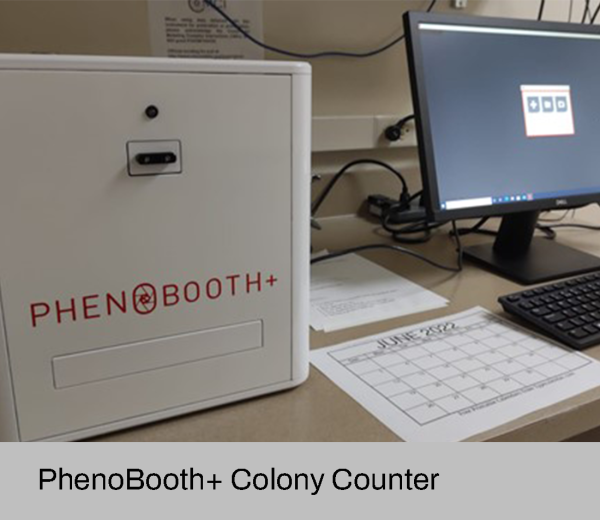
No Charge
The ROTOR
The ROTOR is a rapid colony handling robot that can replicate the entire yeast deletion library in quadruplicate in less than 20 seconds. The ROTOR+ uses a sterile robotic arm and the operator selects and uses an appropriate program from a simple drop-down menu.
The ROTOR can be used to:
- Duplicate and backup large libraries of yeast, fungus, bacteria and algae.
- Replace cells from liquid to agar and vice versa.
- Replicate, mate and rearrange from single or multiple source boards at densities of 96, 384, 1536 and 6144.

No Charge
